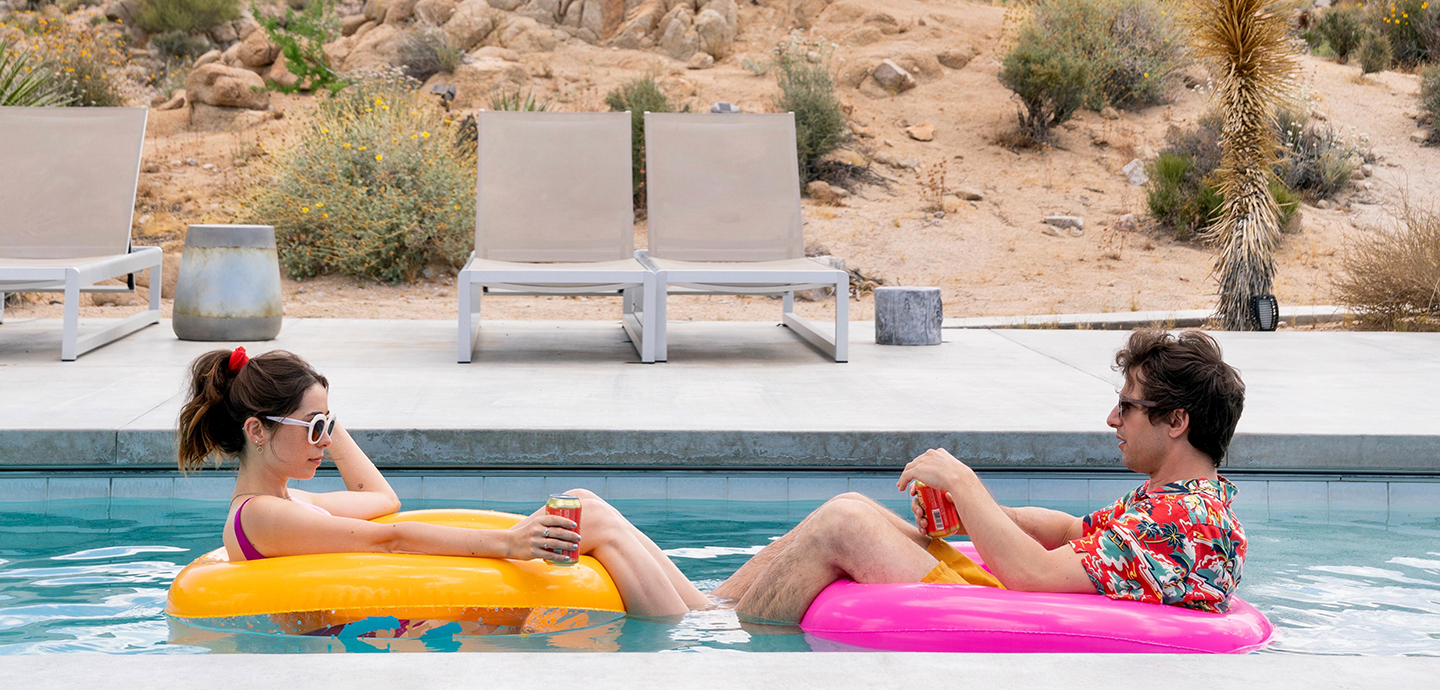
Shifting Tones: Unbelievable and Palm Springs
Cinematographer Quyen “Q” Tran discusses her camerawork and creative approach in two dis-tinctly different narrative projects.
Cinematographer Quyen “Q” Tran discusses her camerawork and creative approach in two distinctly different narrative projects.
“During these Covid times, I’ve been thinking a lot about what I can do as a filmmaker and as a human being to effect more change,” says Quyen “Q” Tran. Holed up in a British Columbia hotel awaiting production on Maid — John Wells’ new Netflix series about domestic violence and poverty — the cinematographer is in quarantine. At night, when she’s not remotely reading Harry Potter to her two kids, Tran is developing recipes for @doughrectorsofphotography, an Instagram bake-sale fundraiser for the Los Angeles Regional Food Bank, co-created with cinematographer and fellow hobbyist baker Jeanne Tyson. Thus far, they’ve raised enough money to support more than 100,000 meals.
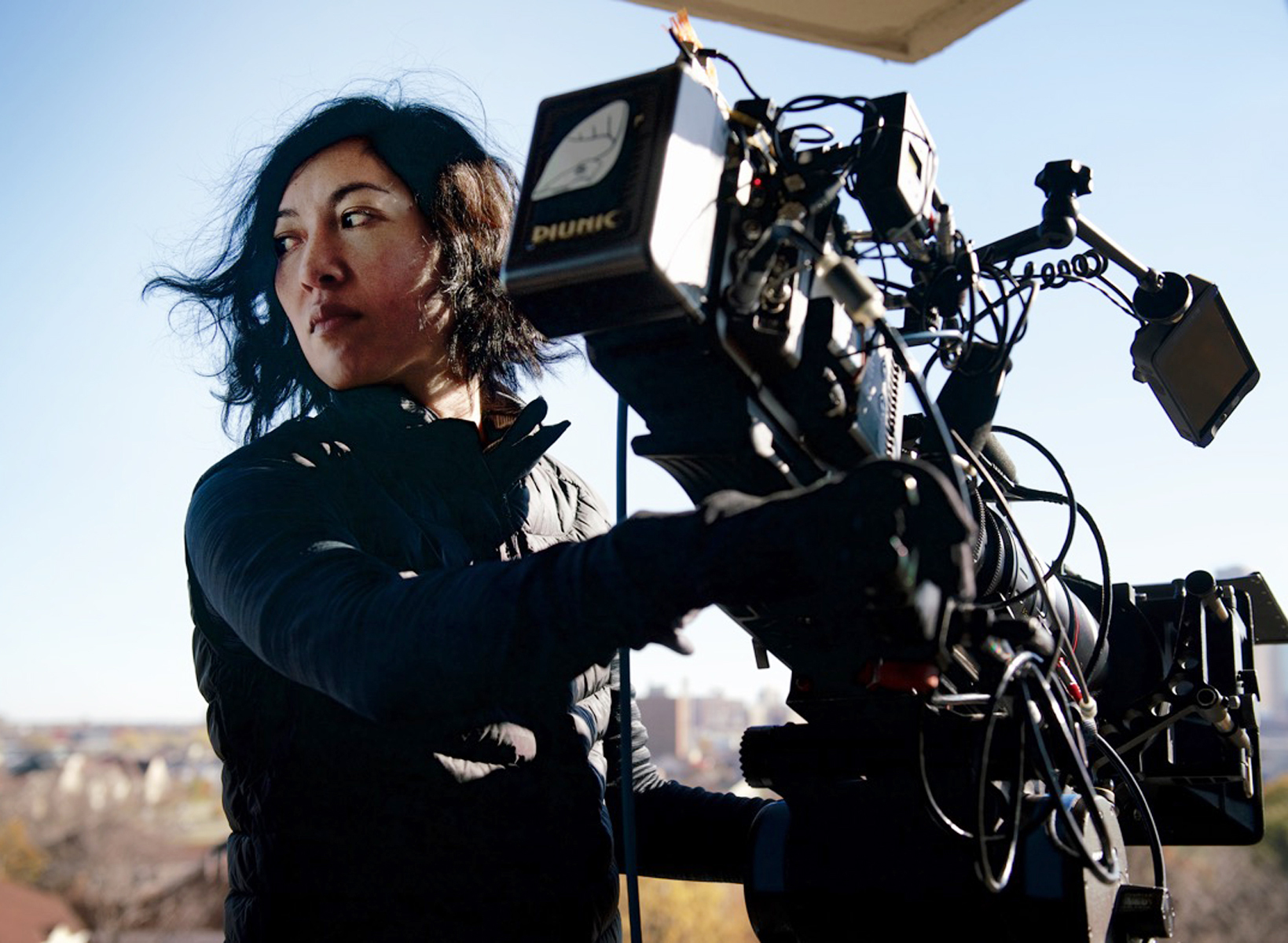
Tran likes her motion-picture work to have impact, too. The daughter of practically minded Vietnamese immigrants, she studied business, but her heart was in the arts. She found part-time work as a photojournalist for Downtown Express in New York City, and when the Twin Towers fell just blocks from her apartment, she photographed that as well, while fleeing. After some soul-searching, she left New York to study film at UCLA.
Since then, Tran — chosen in 2017 as an AC Rising Star of Cinematography (AC Feb. ’17) — has leaned toward meaty, impactful subjects, then cleansed her palate with lighter fare. Her two latest projects embody that approach: the Peabody Award-winning Unbelievable and the comedy that broke Hulu’s opening-weekend record, Palm Springs.
Netflix’s Unbelievable is based on a Pulitzer Prize-winning article about a serial rapist and the two female detectives who cracked the case. From 2008 to 2011, a former soldier targeted women living alone in Washington state and Colorado, and the eight episodes of the series toggle be-tween timelines and locations. The pilot focuses on the first victim, Marie Adler (Booksmart’s Kaitlyn Dever). It begins with the aftermath of the teenager’s rape, integrating flash-backs of the assault every time Marie has to describe it to authorities. There’s never any question in the viewer’s mind that it actually happened, but everyone who surrounds her, from the police to her former foster parents, think she’s making it up.
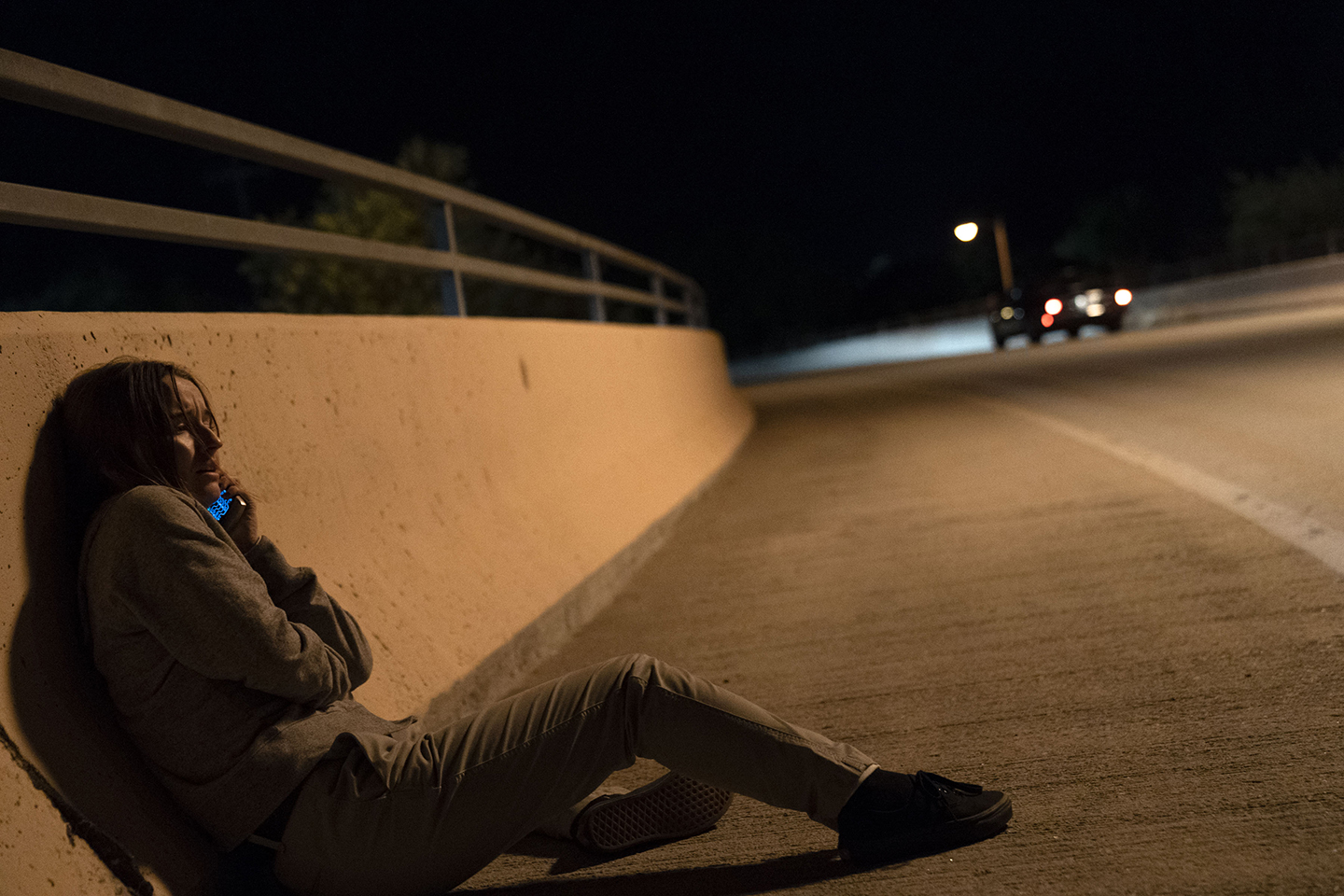
“This show is all about perspective,” Tran told Eric Steelberg, ASC, during an ASC Clubhouse Conversation about Unbelievable. “We wanted to portray everything from the victim’s perspective. We didn’t want anything to appear fetishized or salacious in any way. So we spent the majority of the prep trying to figure out a way to make this victim’s voice heard. And we did that by making the camera as subjective as possible, and physically placing the camera where her face would be during the assault scenes.”
Slung from a bungee cord over Marie’s bed, the Panavision Millennium DXL2 was partially blindfolded, like Marie, revealing only glimpses of her body. Panavision’s 35mm Primo 70 lens also fed into the feeling of assault. “In testing, I just felt this urgency, this immediacy when the large-format lens was so close — it felt very uncomfortable,” says Tran, who shot the first three episodes. (Xavier Grobet, ASC, AMC then picked up the baton, and John Lindley, ASC shot the finale.)
Tran reserved the 35mm prime exclusively for Marie’s rape, never using it elsewhere. “I tried to match the real human POV,” she says, “and in large format, 35mm is truest to her field of view.” That lens was visually echoed by what Tran calls the “police-assault lens” — a 27mm, which was close in intensity but not identical to the 35mm. The cinematographer employed this lens for the 15-page interrogation scene in police headquarters. “That’s when Marie is being brutalized yet again, so to speak, by the police,” Tran says. “We wanted the camera to feel like an assault on her. It’s very threatening, especially when we have a slightly lower angle on one of our police, who’s something like 6-foot-4 and very imposing in real life.” The cinematographer notes that her only deviation from the 27mm in this scene was the use of a 65mm for an “under-the-table” shot.
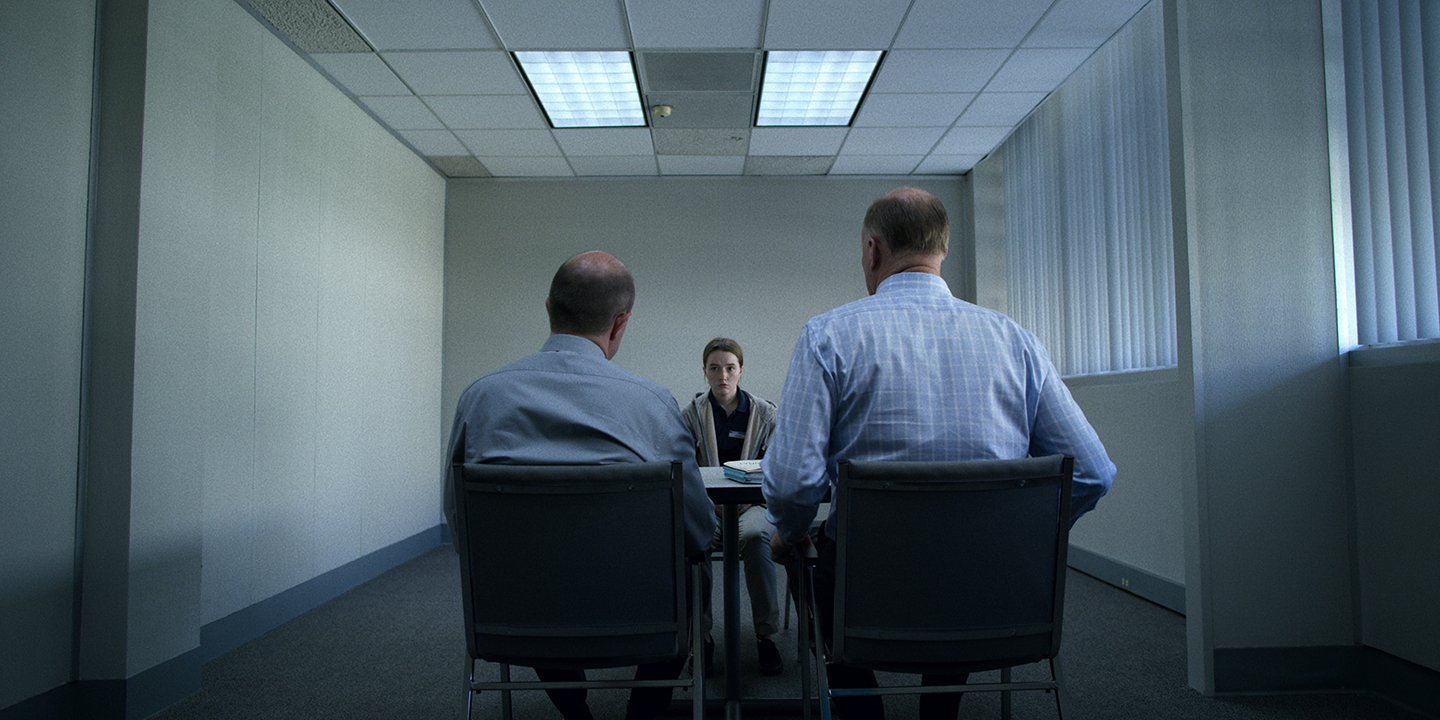
Tran had initially said no to Unbelievable because of a job conflict. But when director Lisa Cholodenko came back to her three weeks later, saying she really needed Tran’s perspective (they’d previously collaborated on HBO’s Here and Now), by then the cinematographer was free to say yes. Though prep had already begun, Tran asked for four days to recharge in Yosemite with her family before joining. Cholodenko and showrunner/writer Susannah Grant — both mothers as well — gave her their blessing.
That same level of consideration was shown to Dever in preparation for the rape scene. In a highly unusual move, the actor was brought in during prep. Cholodenko lay on a couch, while Tran demonstrated camera moves. They wanted to make sure there would be no surprises the day of, and that Dever felt comfortable with everything.
For their part, Tran and Cholodenko had to figure a way out of the predicament they’d boxed themselves into by a strict adherence to Marie’s point of view: “How do we show her face and her reaction to what’s going on?” Tran recalls. Their solution sprung from Marie’s manner of coping by detaching her mind from her body. During the rape, she stares at a photograph of herself that’s hanging near the bed. She’s on the beach in happier times. “So when we’re pushing in on that, that is the first time we cut to her face.” The photo is actually a film still, and there’s a hard cut to the moving picture. Tran had shot that unscripted scene during a camera test, which she’d cleverly arranged to happen at the beach because there was no money for an added scene.
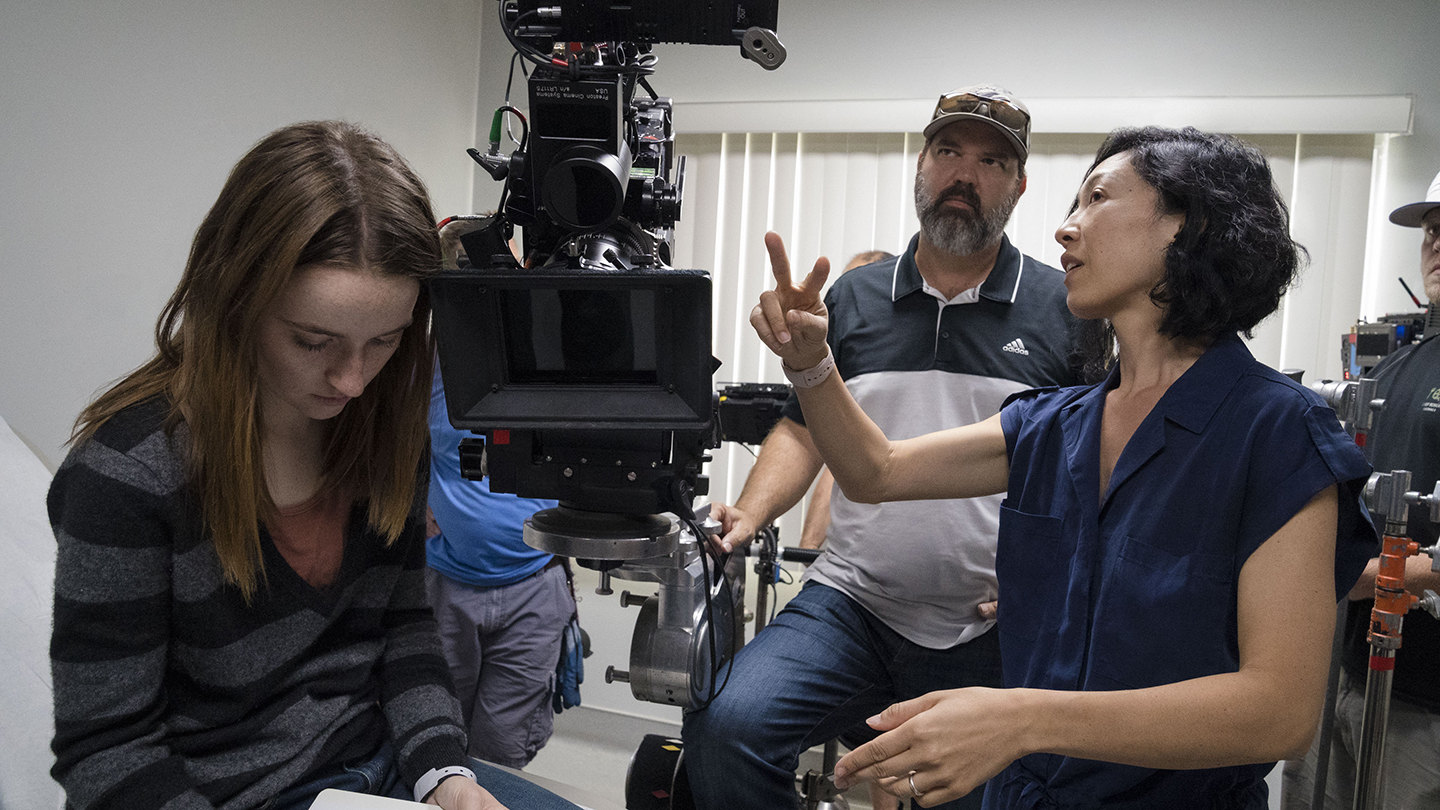
Between Unbelievable and Palm Springs, Tran went to Kenya to shoot Brave Girl Rising, a 20-minute documentary about refugee girls’ education, produced in collaboration with the International Rescue Committee. Panavision donated a camera package, so Tran shot the entire short with a Panavision 35mm T Series anamorphic and fell in love with it. When Palm Springs suddenly came up, she knew she wanted to use the T Series again, coupled with an Arri Alexa Mini. The Kenya shoot “gave me the confidence that I’d be able to move fluidly with the anamorphic series on a comedy that would have very tight locations and no time — and yet I wanted to give it as cinematic a feel as possible.”
The script had won her over, as did her meeting with first-time feature director Max Barbakow. But Tran kept asking herself, as she recalls, “How are we going to do this? It’s so crazy. There are so many demands. There are so many locations and scenarios. This should really be a $40 million film.”
Beyond budget, the challenge was to make what she calls the “whackadoodle” script not feel disjointed. Barbakow has said that Jurassic Park and Anomalisa were big references, which helps explain the result — a popcorn movie with pathos and elements of art-house. Getting the tone right was tricky. “That’s pretty much all Max and I talked about in prep: how to achieve that in a way that feels fluid and seamless,” Tran says. “You have these very insane moments one second, and then these very heartfelt, tender moments the next.”
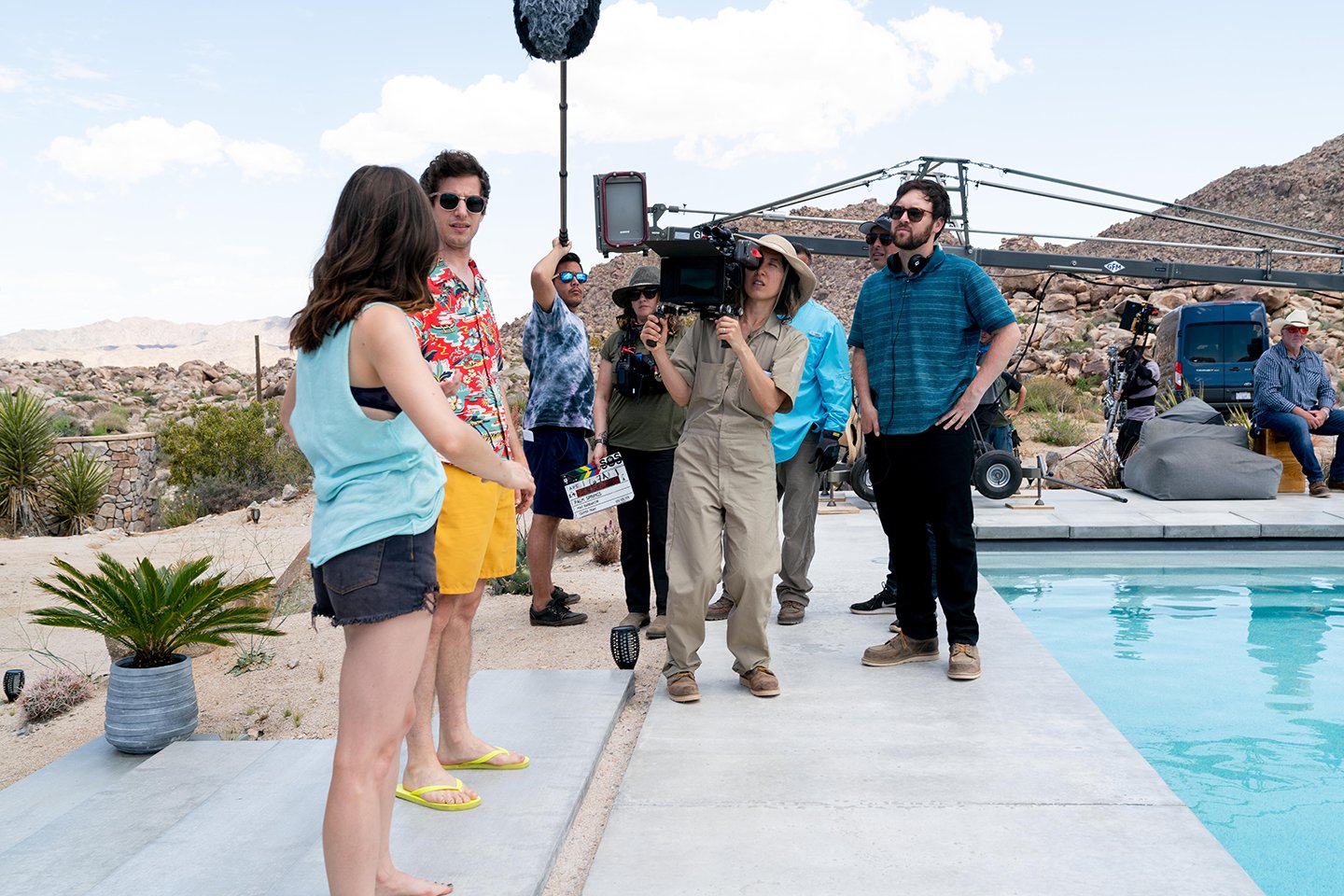
a shot of actors Andy Samberg and Cristin Milioti.
Palm Springs starts out like a standard rom-com set at a wedding. But after an event in a cave, it turns into some-thing else. As Nyles (Andy Samberg) explains to a furious Sarah (Cristin Milioti), “It’s one of those infinite time-loop situations you might have heard about.” After the cave, Tran says, “There’s a retelling of each scene from a new perspective, which is now Sarah’s. Everything becomes over her shoulder, and it’s handheld, it’s moving, it’s confusing. We’re discovering where she’s at along with her.”
As the days roll by and the two venture out beyond the wedding venue and fall in love, the visual design gets freer as well. “We move to a very free-flowing camera — again with handheld movement — because we want to open up the world. We wanted to get outside of this trap, this end-less day.”
The 22-day location shoot started with four days at the wedding venue, then every day after had between one and three company moves. To speed things along, Tran did meticulous prep, designing shots around the sun’s trajectory. With no pre-rigging crew and numerous exterior night scenes, she’d send half the gaffer’s team ahead and retain the other half on set. She called on her documentary background to shoot some scenes in a single take without rehearsal, such as the various tortures that the spiteful, time-trapped Roy (J.K. Simmons) inflicts upon Nyles. Visual effects were extremely low-tech and done in-camera when-ever possible.
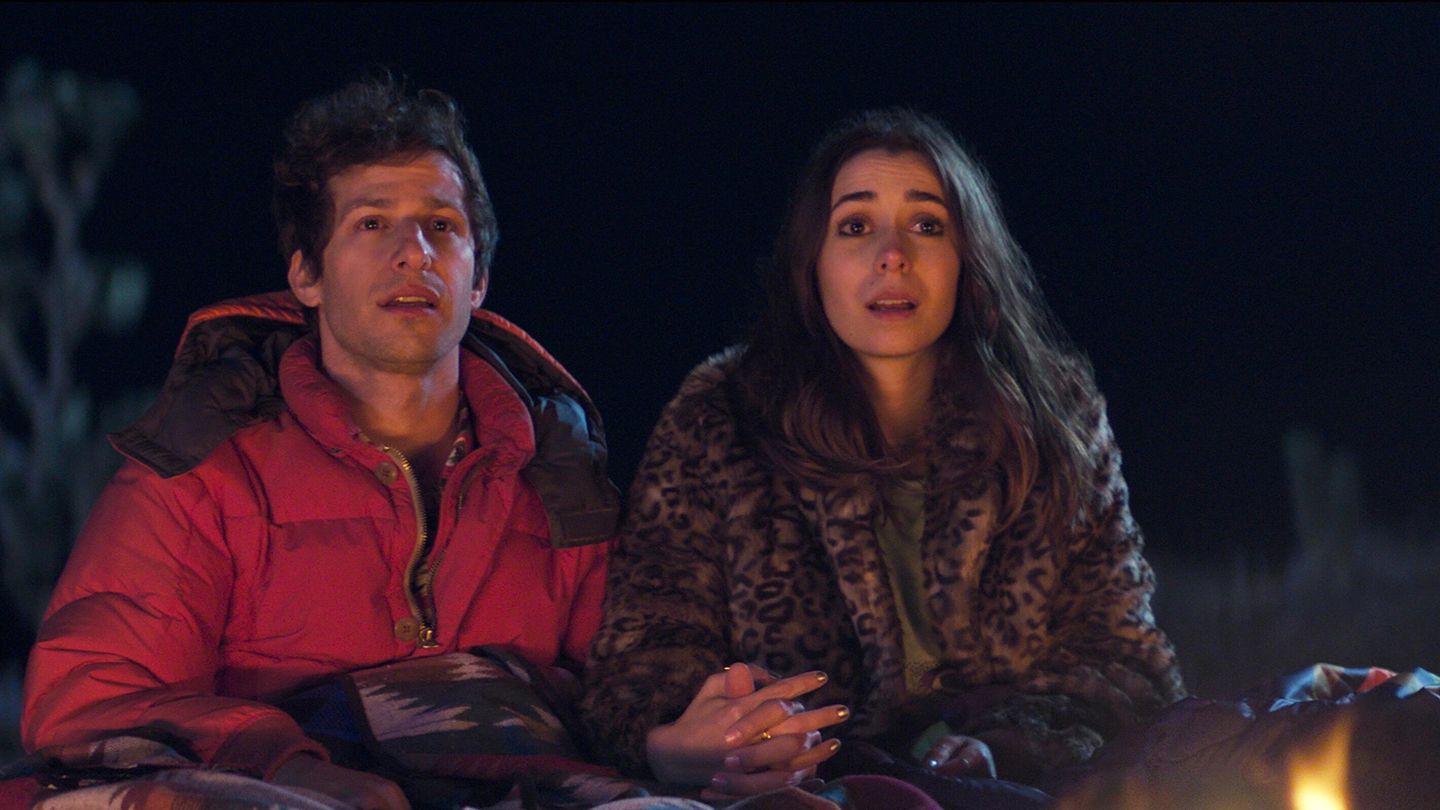
Tran called in favors. She got a friend to fly his drone and snagged a Technocrane for free. She got talented crew to sign on. She jokes that she lost money on the movie, “because every night, I would take my crew out to dinner, just to say thank you for being here,” she says. “I’ve already told my crew, ‘The next job in L.A., I want to get us all back together so we can pay you properly.’”
Despite these challenges, Tran says of the shoot, “It was so fun. I love Max. I love my crew. It was the spirit of independent film that made me fall in love with filmmaking in the first place. Everyone is there not for the money, but for the story.”
To view Tran’s Clubhouse Conversation episode about shooting Unbelievable with interviewer Eric Steelberg, ASC, click here.





